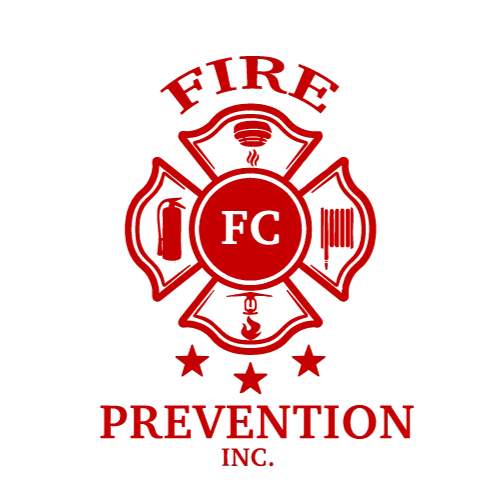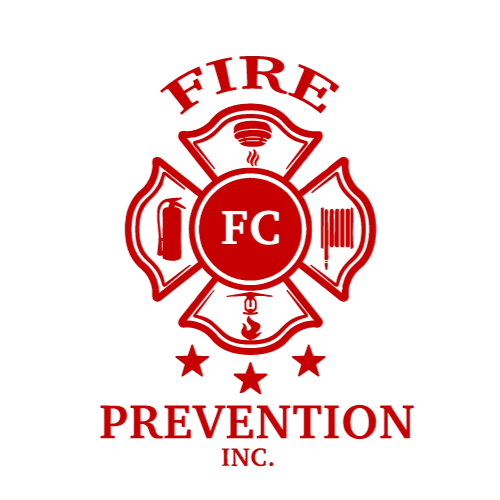Fire safety is a critical concern for property owners, managers, and residents. Annual fire inspections play a vital role in ensuring the safety of all occupants.
These inspections help identify potential fire hazards. They also ensure that fire safety systems are functioning as they should.

But what exactly are annual fire inspections? And how can you prepare for them?
This article provides a comprehensive checklist for annual fire inspections. It aims to guide you through the process and ensure compliance with fire safety regulations.
By understanding what to expect, you can better prepare for these inspections. This not only helps you comply with the law but also promotes the safety of everyone in the building.
So, let’s delve into the essential checklist for annual fire inspections.
Understanding Annual Fire Inspections
Annual fire inspections are a crucial part of maintaining safety within any property. They are designed to identify potential hazards and verify that all fire safety systems are operating correctly. This process reduces the risk of fire and ensures compliance with local regulations.
These inspections are often mandatory and conducted by certified professionals. They check various elements like alarm systems, extinguishers, and emergency exits. Non-compliance may lead to fines or legal action, so understanding what these inspections entail is essential for property managers and owners. Proper preparation can help mitigate risks and enhance overall safety.
The Importance of Fire Risk Assessments
Fire risk assessments are vital for identifying and evaluating potential fire hazards. They help determine the likelihood of a fire occurring and assess the potential impact. By conducting these assessments, property owners can create strategies to mitigate identified risks.
A comprehensive fire risk assessment looks at several factors. These include evaluating building materials, checking firefighting equipment, and reviewing evacuation plans. This proactive approach is essential for safety and compliance. Regular assessments ensure the building is prepared for potential emergencies and helps to protect residents and property. By prioritizing fire risk assessments, property owners can prevent devastating losses and maintain a secure environment.
Preparing for Your Annual Fire Inspection
Preparation is key to a successful annual fire inspection. Understanding what inspectors look for can help in organizing and addressing potential issues. Begin by reviewing your fire safety checklist and ensuring all aspects are covered.
Ensure that all fire safety equipment is accessible and functional. Verify that documentation of previous inspections and maintenance is up to date and available for review. Check that all areas of the building comply with safety standards and regulations.
Here is a list of steps to prepare for your fire inspection:
- Review and update the fire safety checklist.
- Test all alarm and detection systems for functionality.
- Ensure emergency lighting and exit signs are operational.
- Inspect fire extinguishers and suppress them systems.
- Verify that escape routes are clear and fire doors function.
Engaging with a professional fire safety consultant can be beneficial. They provide insight and support to ensure compliance with fire safety laws. This collaboration can enhance safety measures and prepare you thoroughly for the inspection.
Key Areas of Focus During an Inspection
During annual fire inspections, there are several crucial areas that inspectors examine. These areas ensure the building’s fire safety systems and measures are effective and up to date. Focusing on these components will enhance the safety and security of occupants.
Inspectors will assess alarm and detection systems to ensure they meet legal standards. They will also examine emergency lighting and exit signage to confirm they guide occupants safely during evacuations. The condition and placement of fire extinguishers and suppression systems play a major role in fire management.
The condition of escape routes and fire doors is evaluated for readiness in the event of a fire. Here is a checklist to help focus on key areas:
- Test fire alarm and detection systems.
- Verify emergency lighting and signage.
- Check fire extinguishers and suppression systems.
- Inspect escape routes and fire doors.
- Review electrical systems and potential hazards.
- Evaluate storage and housekeeping for safety compliance.
Electrical systems and equipment are scrutinized for safety. Hazardous wiring or overloaded circuits can contribute to fire risks. Finally, storage and housekeeping practices are reviewed to prevent fire hazards related to materials that could fuel fires.
Fire Alarm and Detection Systems
Fire alarm and detection systems serve as the first line of defense. These systems should be tested regularly to ensure they function correctly. A qualified professional must certify their reliability as part of the annual inspection process.
Beyond functionality, alarms should be placed in strategic areas for maximum coverage. This ensures prompt detection and allows for swift action in case of fire. Keeping a record of tests and maintenance enhances your fire safety compliance.
Emergency Lighting and Exit Signage
In an emergency, clear visibility and direction are paramount. Emergency lighting ensures that hallways and exit routes remain lit during a power outage. Inspectors will check that these systems work correctly and provide adequate lighting.
Exit signage is equally important, guiding the occupants to safety. Signs should be illuminated and visible, even in smoke-filled conditions. Regular maintenance guarantees these vital components remain effective year-round.
Fire Extinguishers and Suppression Systems
Fire extinguishers are critical for tackling small fires before they escalate. Ensure they are readily accessible and fully charged during the inspection. Each extinguisher should receive annual maintenance and servicing by qualified personnel.
Suppression systems, such as sprinklers, must be inspected for functionality. Unobstructed nozzles and pipes ensure they will activate effectively in a fire. Consistent service records help establish their reliability.
Escape Routes and Fire Doors
Escape routes must be clear and accessible at all times. Inspectors will confirm that these pathways are unobstructed and navigable. Regular checks help ensure these routes facilitate a safe and orderly evacuation.
Fire doors serve a dual purpose: they allow people to escape while containing fire and smoke. Therefore, these doors must close properly and not be propped open. Their maintenance is crucial for limiting the spread of fire.
Electrical Systems and Equipment
Faulty electrical systems can pose serious fire risks. Inspectors will examine electrical panels, outlets, and wiring for issues like frayed cords or overloaded circuits. Prompt repairs or replacements are essential to eliminate potential hazards.
Safety inspections extend to equipment powered by electricity, such as HVAC and kitchen appliances. Regular maintenance and adherence to safety standards mitigate the risk of electrical fires. Keep an organized record of service history to streamline this process.
Storage and Housekeeping
Proper storage and housekeeping can prevent fires in residential and commercial settings. Accumulation of clutter, especially flammable materials, increases fire risk. Maintain an organized space to minimize this danger.
Inspectors will check that flammable liquids and materials are stored in designated containers and areas. Clear labeling and secured storage reduce risks of accidental ignition. Routine checks ensure compliance with fire safety regulations and practices.
Documentation and Record Keeping
Accurate documentation and thorough record keeping are vital components of successful annual fire inspections. Keeping detailed records of past inspections, maintenance activities, and any repairs conducted ensures a clear trail of compliance.
These documents not only prove compliance with fire safety regulations but also help identify patterns and areas requiring attention. Easily accessible records facilitate swift responses during follow-up inspections and audits.
Organized documentation supports communication with stakeholders, including residents, insurance providers, and fire safety officials. Continually updating records as inspections occur aids in monitoring the progress of implemented safety measures. This proactive approach enhances overall fire safety management.
Addressing Violations and Recommendations
Once annual fire inspections are complete, the next step is crucial. Addressing any identified violations promptly is essential to maintaining safety.
Action on recommendations not only ensures compliance but also mitigates potential hazards. Swiftly correcting issues reflects a commitment to fire safety and demonstrates responsibility toward occupants’ well-being. This proactive measure can also prevent future violations and associated penalties. Prioritizing fire safety improvements boosts confidence among residents and stakeholders alike.
Educating Residents and Staff
Education is key to effective fire safety. Residents and staff must know fire procedures and protocols. Regular training ensures everyone understands evacuation plans and the use of safety equipment like extinguishers.
Fire drills enhance preparedness and response times. These drills should be a regular feature and tailored to the unique layout of the building. By actively engaging residents and staff in fire safety practices, you foster a safety-conscious environment. Informed occupants are better prepared to act swiftly in case of an emergency, reducing risks and enhancing overall building safety.
Conclusion: The Role of Annual Fire Inspections in Safety and Compliance
Annual fire inspections serve as a cornerstone for maintaining safety and regulatory compliance. They are not mere formalities but vital checks that ensure the reliability of fire safety systems. Through these inspections, potential hazards can be identified early, preventing possible disasters.
By addressing inspection findings promptly, property owners demonstrate commitment to safety. This proactive approach protects lives and enhances property value. Compliance with fire safety regulations can save significant costs related to potential fines and liabilities. Ultimately, these inspections are essential for creating a secure living and working environment for everyone involved.


Comments are closed